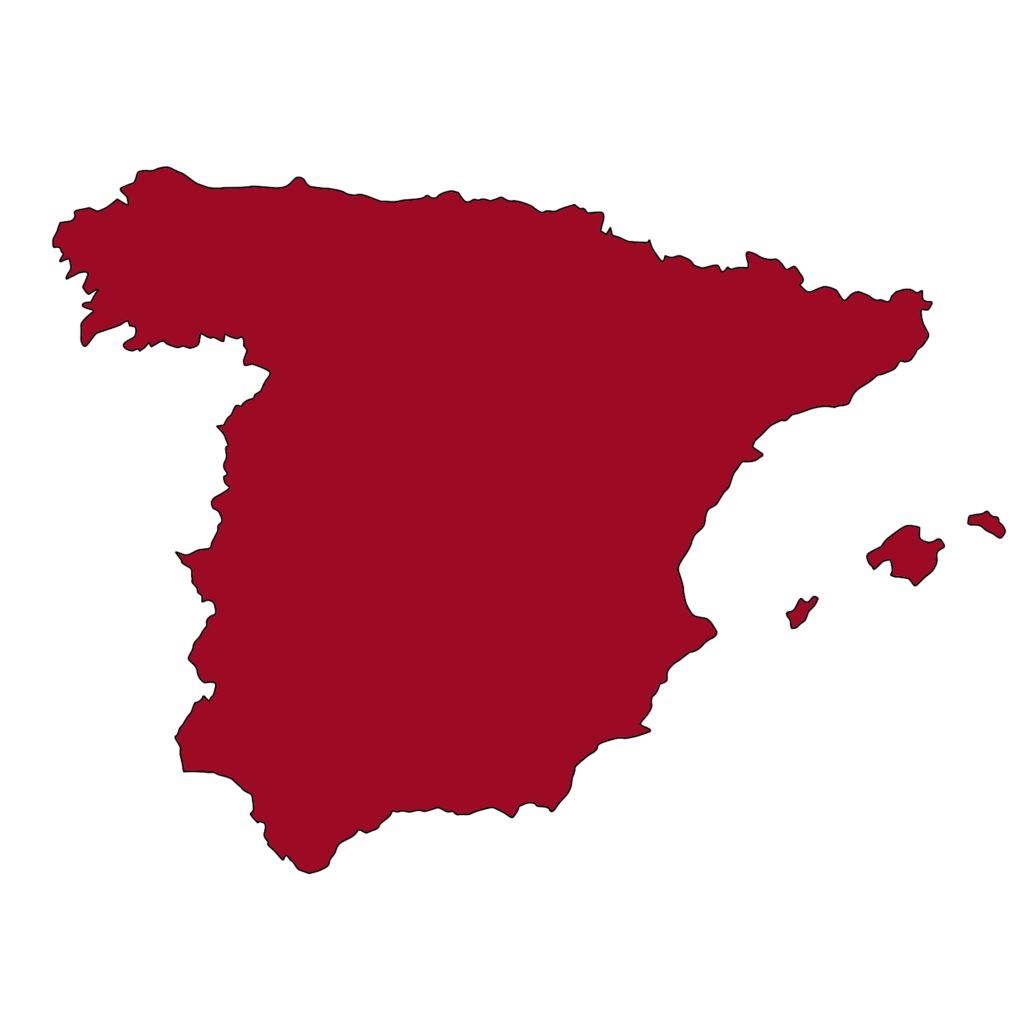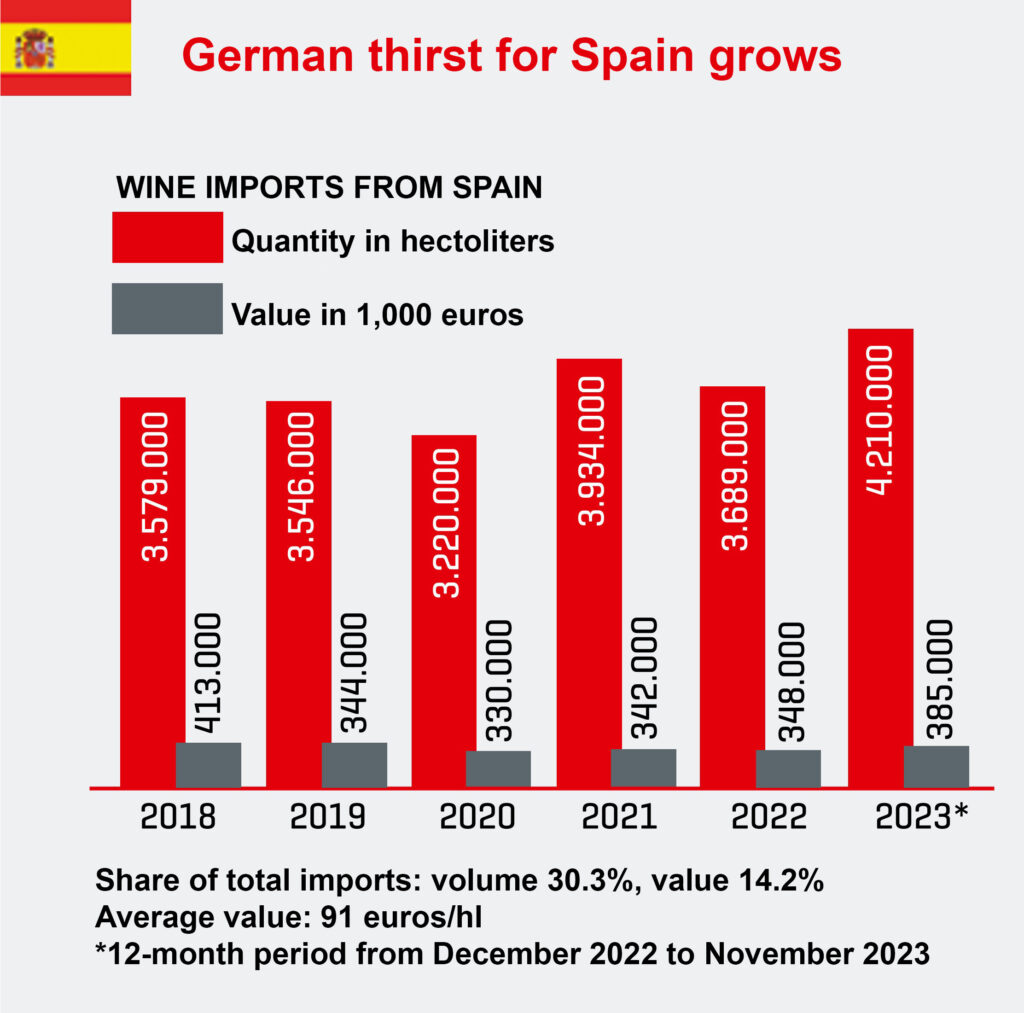
The country has the largest area under vine in the world. About 967,000 hectares of vineyards are cultivated by about 150,000 winemakers in nearly 5,000 bodegas (wineries) and bottling plants. In 2014, Spain became the world’s largest exporter of wine for the first time.
Spain has an ancient wine tradition and is considered a multifaceted wine giant. With more than 1 million hectares under cultivation for wine, Spain is the world’s leader. These vast areas are farmed by over 150,000 winemakers and some 5,000 bodegas. Through iron striving for quality, well-considered viticulture as well as sophisticated processing techniques, Spanish wine has succeeded in gaining worldwide fame and appreciation. Due to the diverse characteristics of the terroir, Spain can offer a great variety of incomparable red and white wines, which on the one hand convince through typical varietal and on the other hand through individual character traits.
Three climatic zones in particular characterize the wine profiles: the very cool north, the hot table country and the dry coastal region. Most of the award-winning wines come from the north of Spain. Since the quality offensive, Rioja and Navarra have become the flagship of Spanish red wine. But these two regions are also at the top in terms of white wine. Other Spanish regions such as Catalonia, with the Priorato and Penédes growing areas, and the Rueda and Ribera del Duero areas have developed strongly. The south of Spain, on the other hand, has been known for centuries for fortified wines such as sherry. Spanish red wine is characterized by the enormous diversity of grape varieties. Today, it is said that over 600 different grape varieties are still grown in Spain. Despite this great diversity, only a few grape varieties are very successful. These form the basis for most of Spain’s red wines. First and foremost is the Tempranillo, which convinces with its silky and ripe character. This is often supplemented with Garnacha and Monastrell, these round off the character of Tempranillo perfectly. The great quality of Spanish white wines was long rather unknown. But this has changed in recent years. The fresh and fruity white wines from Albarino, Verdejo & Co. are gaining more and more fame, enjoying increasing popularity and causing a stir internationally time and again.
Vino de Mesa (VdM) / Vino de España
The designation Vino dde Mesa is now banned. According to the new labeling (Vino de España), these wines may also contain grape variety and or/year information. It is the lowest quality level.
Vino de la Tierra (VdT) / Indicación Geográfica Protegida (IGP)
Vino de la Tierra (Land Wine) or the new term Indicación Geográfica Protegida (Protected Geographical Indication) is a predicate for typical territorial wines. The wine must be from the defined area and from authorized grape varieties and must meet the defined qualitative requirements.
Denominación de Origen (DO) / Denominación de Origen Protegida (DOP)
This is the controlled denomination of origin, or in the future the protected designation of origin, which, as with the French AOP designation, prescribes strict criteria regarding yields, grape varieties, viticulture and vinification techniques, type of harvest and alcohol content, as well as prescribing wine analyses and tastings.
Denominación de Origen Calificada (DOCa) / Denominación de Origen Protegida (DOP)
The DOCa has been the highest quality level for wine regions, whose outstanding vineyards are particularly carefully controlled. Rioja first received this status in 1991. Priorat followed; however, DOQ is often used here instead of DOCa. Due to the new designation law, these regions will also be DOP in the future.

Spanish wine imports to Germany are rising due to low prices, although the price per hectoliter fell by 3% in the previous year. Spain is now in second place in Germany in terms of volume with 4.21 million hectoliters and has increased sales by 10.6%. Although imports of bulk wine increased by 14 percent, its share remains at 78 percent, while Spain achieved sales of 189 million euros with bottled wine. The share of white wine in imports rose to 67 percent, while that of red wine fell to 33 percent, and liqueur wines recorded an increase of 0.9 percent by volume and 9 percent by turnover.

